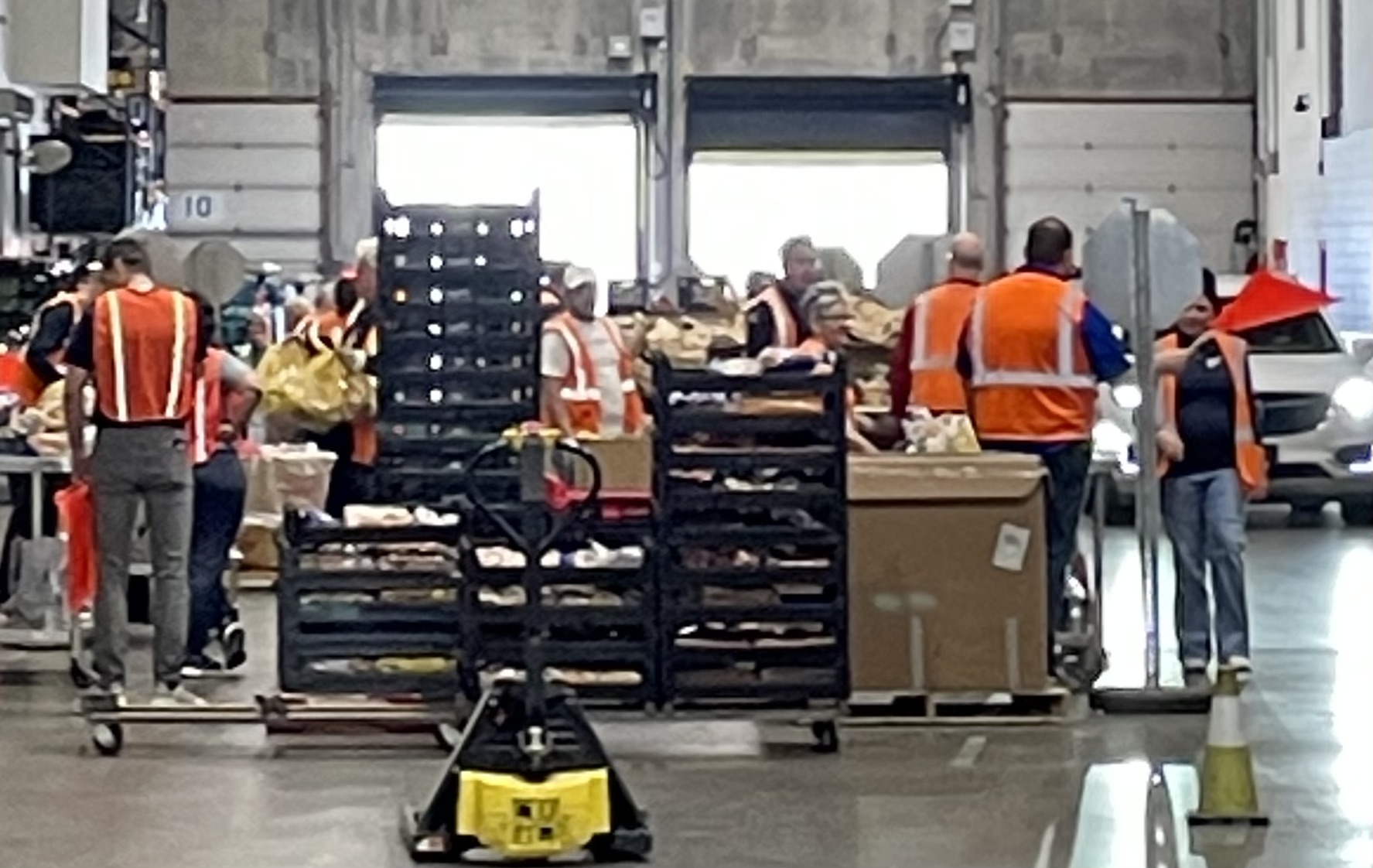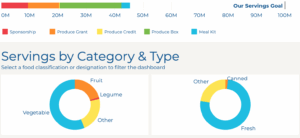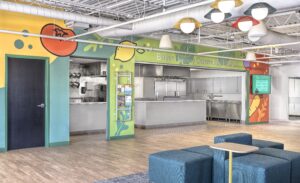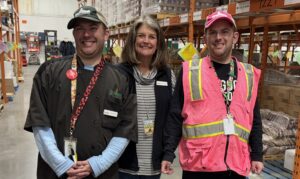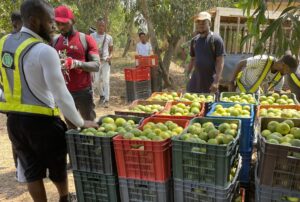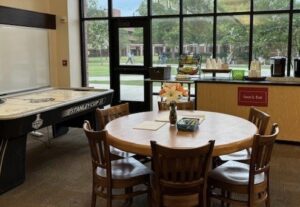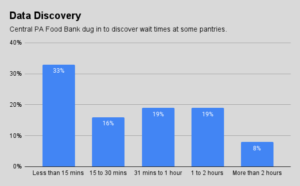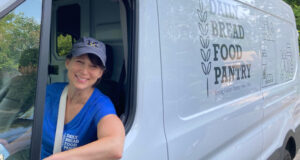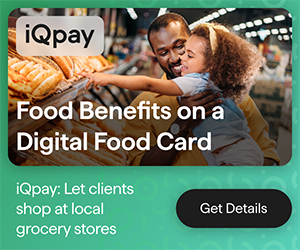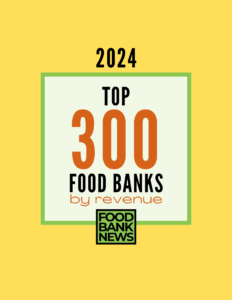Coming out of Covid, many food banks phased out their drive-through distributions. Gleaners Food Bank of Indiana is taking the opposite approach by leaning into its drive-through.
There are good reasons to move away from drive-through distributions, as they generally don’t let clients choose their own food, nor access wrap-around services. But Gleaners has found ways around those potential drawbacks.
It sees its approach as necessary to serve a growing segment of the food-insecure population – those whose work schedules prevent them from accessing charitable food in traditional ways. Gleaners’ souped-up drive through not only lets clients choose the food they want, but also pick it up from any one of a number of community partners that also offer additional social services.
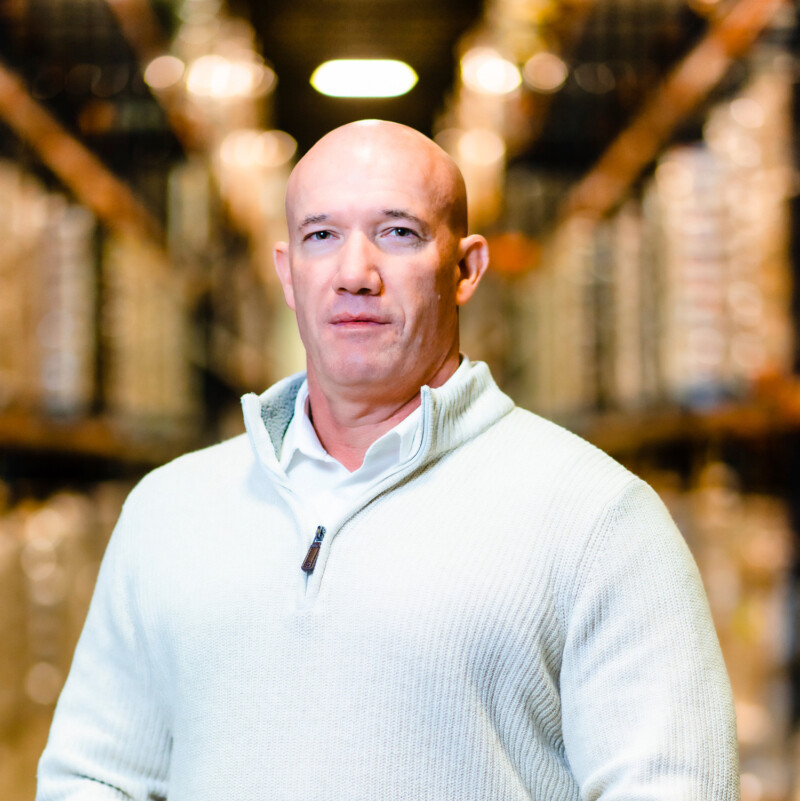
“We believe in a model that not only engages new distribution partners, but adds a strong element of convenience,” said Joe Slater, Chief Operations Officer.
Gleaners’ embrace of the drive-through started when it began redirecting clients back to its in-person on-site pantry, as Covid was winding down. Before the pandemic, the pantry had served about 400 people a day. Post-pandemic, however, it was pushing five, six and sometimes even 700 people a day, with wait times of up to two hours.
“That was not who we wanted to be,” Slater said, noting that the space was just too small to handle the growing volume.
As it happens, Gleaners’ headquarters building, which formerly served as a beer distributor, features a broad lane (previously used by the beer trucks) right down the middle of the warehouse, with plenty of space to stage groceries (see photo, top). Gleaners also had plenty of positive feedback related to the speed, convenience and autonomy of its drive-through. “We just decided, the drive-through is going to be our thing,” Slater said.
That decision led the food bank to set about improving the drive-through experience. People needed to be able to choose exactly the food they wanted. They also needed to be able to choose whether to pick it up from Gleaners or a variety of non-food community partners – and it all had to happen at scale.
Gleaners originally used Feeding America’s Order Ahead online ordering system to support its vision, but soon discovered that the system lacked the ability to fulfill large amounts of orders in an automated way. “We needed integration on the order fulfillment side in order to scale, which would enable us to really bring this into more communities and engage with more partners,” Slater said.
So far, Gleaners has nearly 30 community partners using its food distribution platform, which is called Groceries2Go. The partners include nonprofits in low-income housing, adult education, employment, and other social services. Gleaners, working through its Fresh Connect Central wholesale distributor, delivers the food orders to its community partners on a regular basis, arriving just before the pick-up window.
The set-up lets Gleaners “do food distribution in a way that doesn’t require a big brick-and-mortar investment” in storage and capacity on the part of the community partners, Slater said. Plus, the food bank is taking advantage of trusted relationships that clients already have out in the community. Currently, about 1,000 people have access to Groceries2Go on a weekly basis to order food, and the food bank is fulfilling about 500 orders a week, Slater said.

Clients of course can also choose to pick up their orders directly from Gleaners. Still under development is what Slater calls the “Chik-Fil-A option,” in which clients can place orders on-site at Gleaners and pick them up in real time. Other neat features: an AI recipe generator that supplies recipes based on the ingredients ordered; the ability to curate menus to support medically tailored groceries, and the ability to add prices to items to support a low-cost grocery shopping option.
A growing trend in food banking is to adopt a “community service model,” in which the food bank acts as an initial touchpoint for clients, guiding them to additional social services once they’ve fulfilled their food needs (see our article here). Gleaners intends to mimic this real-life capability online, by allowing people to click on links to get to wraparound services or schedule medical appointments, for example. “We can electronically refer people to partners,” Slater said.
Gleaners is not the first food bank to combine the dignity of choice with the convenience of drive-through pickups. Northern Illinois Food Bank was an early innovator in this space with its My Pantry Express, which it piloted back in 2019 (see our article here). These days, Northern Illinois is fulfilling 90,000 to 100,000 orders a year through My Pantry Express, with more than a dozen pickup points that include retail locations like Walmarts, elementary schools, and its own distribution hubs, said Julie Yurko, CEO. Clients can also request home delivery or a pickup at the food bank’s newly launched food locker.
Some food pantries have also been leaders in bringing a high level of choice to the drive-through. Mitzvah Food Project in Philadelphia has long been using software from SmartChoice to allow clients to pick up customized food orders at either one of its four locations or via a drive-through option.
Gleaners has big plans for Groceries2Go, including private-labeled versions of the platform. The Pacers Foundation is the first to take advantage of private-labeling, branding the platform as “Drive and Dash” to help establish itself as a supporter of healthy and nutritious food in the community. Healthcare centers are other natural partners for private-labeling. “I think there’s a lot of private-labeling we can do so we can expand distribution and have it be funded,” Slater said. “If the neighbor has a relationship with the trusted partner, then that’s what we want people to lean into.”
Gleaners built Groceries2Go in a way that makes it possible for other food banks to license the technology, though that is not happening yet. “We’ve built the technology with that in mind,” Slater said. “But it will take us a little bit of time to figure out if there is a viable licensing opportunity or not.”
Even as Groceries2Go takes hold, the food bank still expects the bulk of its food distribution to happen through its traditional agency network. “We don’t need to replace the current model that’s been working for decades, but we do need to evolve it,” Slater said. “We’re going to be pretty unapologetic for bringing convenience to charitable food distribution.” – Chris Costanzo
Like what you’re reading?
Support Food Bank News
